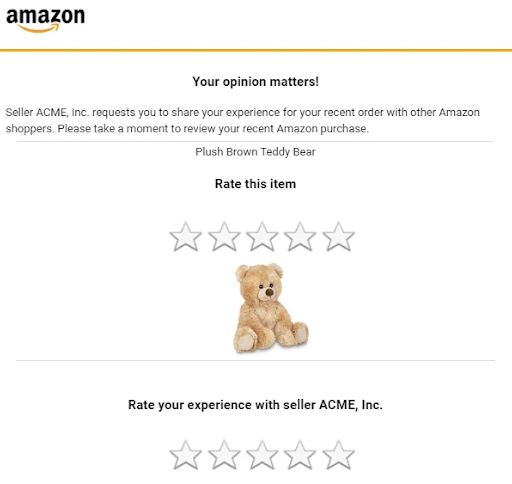"See that massive spike in web traffic last Tuesday? That's when we sent the monthly newsletter." If you're leading a marketing team, you've undoubtedly heard a statement like this before. That's because email is still consistently one of the best drivers for website traffic, which can lead to huge conversions.
According to HubSpot’s State of Marketing 2024 Report, email marketing is still one of the top channels for ROI, earning an average $36 for every dollar spent.
| Channel | ROI |
| Website/SEO | 16% |
| Social Media Shopping Tools | 16% |
| Email Marketing | 14% |
| Paid Social | 14% |
| Content Marketing | 14% |
But in case you need a few more reasons to convince your company email marketing is worth the work, I've compiled a list of about 50 email marketing statistics for 2024, backed by data that speaks for itself.
What Is Email Marketing?
Email marketing is the act of sending a commercial message via email marketing software that contains news, product updates, resources, or a sales offer to help customers make purchase decisions. It can be a one-to-one email or a campaign that you send to a list of subscribers or customers.
In my decade of experience in B2B digital marketing, I've seen the power of email marketing in action, utilized as a part of inbound and outbound marketing strategies, and how essential they are for all companies and industries to capture leads and progress them down the marketing funnel.
Email Usage Rate Statistics
First, let's take a look at just how prevalent email is. Regarding the number of email users worldwide, there are 4.4 billion people. The last time I checked, that's about half of humanity!
Compared to other platforms, email is still far in the lead regarding the number of users. For comparison, the most prominent social media platform globally, Facebook, is projected to have 3.07 billion monthly active users by the end of 2024. So, email has the most users, but are they active?
Well, in 2023, Statista reported that an average of 347 billion emails were written and sent daily—with a forecasted 376 billion in 2025. Most people open their email inboxes at least once a day, while 19% check emails as soon as they hit the inbox. And according to a study done by Microsoft, some professionals spend up to 8.8 hours per week on email.
Email Growth and ROI Statistics
Knowing just how vital email is as a means of communication, marketers are taking full advantage. Fortunately, compared to other marketing activities like social media advertising or direct mail campaigns, sending an email marketing campaign requires minimal financial resources.
For prospecting, it's basically free to figure out someone's email, and there are a number of savvy ways you can build your email list for marketing, from pop ups to collecting business cards. With email, businesses of any size can reach customers without breaking the bank and still achieving impressive results.
I remember at one e-commerce company I worked for when we wanted to hit our numbers for the quarter, we would send a targeted email campaign via Hubspot, announcing a 24-hour sale. This tactic would always do the trick!
Here are some stats about the importance of a solid email marketing strategy:
- 90% of Americans are subscribed to at least one newsletter, with 74% receiving newsletters from 1-10 senders, according to Storydoc.
- 77% of B2B companies use an email marketing newsletter as part of their content marketing strategy, according to OptinMonster
- 67% of B2B buyers prefer to be contacted over email—double that of any other method, i.e., phone or LinkedIn, according to SoPro's The State of Prospecting 2024 report.
- 79% of B2B marketers find email to be the most successful channel for content distribution, according to OptinMonster.
- 4 out of 5 marketers said they'd rather give up social media than email marketing, according to HubSpot.
Comparing Conversion Rates: Email vs. Social Media vs. Paid Search
When it comes to measuring ROI, email also fares better than other channels.
- Email: Email lets you send targeted messaging directly to potential customers' inboxes, resulting in an average conversion rate of 15.22%, according to Bloomreach.
- Social Media: Although platforms like Facebook and Instagram can help increase brand awareness, their average conversion rates range from 2-5%.
- Paid Search: While Google Ads can drive traffic to your website, its average conversion rate is only 4.4% for the Search Network and 0.57% for the Display network, as reported by WordStream.
One not-so-surprising way to increase the ROI of your email marketing efforts? Follow best practices—which includes complying with regulations like Europe's GDPR. According to Litmus, playing by the book in countries with stricter compliance laws leads to 12% higher returns in email.
Email Open Rate Statistics
With so many emails being sent per day—remember, it' was's projected to reach 376 billion—you can't expect every email you send to be a winner. However, email open rates—the percentage of subscribers who open a specific email out of your total number of subscribers—are high and easy to measure.
In 2023, GetResponse reported that the average open rate was 26.8%. If you're currently underperforming, see how you can optimize your email subject lines and email deliverability rates. Perhaps you need to clean up your list. Good email list hygiene can be a step towards your highest open rates.
Several things can make a real impact on email open rates. The first is the day that you send your email. If you're in B2B marketing, the best day to send an email is Tuesday or Wednesday since people tend to be overwhelmed at work on Monday and mentally checked out by the end of the week.
By and large, the worst open rates and click-through rates happen on the weekend (especially on Sundays). But there are no hard and fast rules. Depending on the industry, sending an email on the weekend might actually make sense and result in a higher open rate.
"See which day makes sense for your audience, and focus on sending more valuable content people will want to engage with."
Michal Leszczynski, Head of Content Marketing & Partnerships at GetResponse
Other factors that impact average email open rates are the frequency of email sending, email deliverability—a science in and of itself—and subject line attractiveness, including the use of personalized subject lines.
Some interesting facts about email open rates:
- Hubspot has found that the most compelling email subject lines engage curiosity, include promotional offers, contain emojis, and are personalized to each recipient's interests.
- Welcome emails saw an average open rate of 63.91% in 2023 according to GetResponse.
- According to Litmus, the optimal number of emails to send is 9-16 per month per recipient for the best open rates. Sending less or more than this range of emails yielded lower returns.
- A 2023 study conducted by Validity revealed that globally, 84.8% of emails, on average, successfully reach their intended inboxes.
Like email open rates, you might hear about the click-to-open rate (COTR), which measures the percentage of subscribers who clicked something in the email as related to the total number who opened it.
Email Click-Through Rate Statistics
Once someone opens your email, the next metric to track for this marketing channel is the click-through rate (CTR) or the percentage of recipients who clicked on one or more links in your email. This helps you to understand the overall email engagement.
According to the email service provider, MailerLite, the benchmark for average CTR across all industries is 7.38%. The content length, email design, copy, and placement of your CTA are all factors that can make a huge difference here.
Want to stand out in someone's inbox? Consider adding an interactive element like a poll, GIF, video, podcast embed, or any other moving element that people can click on. It will grab their attention since so few other emails manage to do so while helping boost engagement and website traffic.
In this example, Amazon does a killer job of interactive email content by adding a poll, making it frictionless for customers to provide feedback on their recent purchase without having to leave their inbox:

To improve your CTR, A/B test different elements of your email until you determine the best length, button size, color, call-to-action text, etc.
For example, Campaign Monitor increased CTR by 127% in one email template design test! Take advantage of the opportunity there.
Email Conversion Rate Statistics
Improving your open and click-through rates is a precursor to having a reasonable email conversion rate, or the percentage of people who take a desired action due to your email.
Here are some valuable stats to know about email conversion rates:
- Email conversion rate is the top KPI for best-in-class marketing teams, with 41% of the marketers prioritizing it over other metrics, according to Mailjet
- Klayviyo found that abandoned cart email flows had a 3.31% conversion rate, and welcome emails had a 2.35% conversion rate.
- Personalized CTAs have been shown to boost conversions by over 200%.
Similar to improving your click-through rate, to improve email conversion rates, conduct A/B testing, use a email template, include an optimized landing page for each CTA, create a sense of urgency that answers the question, "Why take action now?" and don't forget to optimize for mobile.
Other Key Metrics to Track in Email Campaigns
- Bounce rate: The percentage of emails that were undeliverable or rejected by the recipient's server.
- List growth rate: The net increase in your subscriber list over a given period, accounting for new subscribers and unsubscribes.
- Unsubscribe rate: This number tells you how many users opt out of your email marketing campaigns.
Email Personalization
Gated's most recent Inbox Intelligence Report showed that 82% of people miss essential emails because there is too much in their inbox. One way to cut through the noise is with personalized emails, which are known to improve open rates, increase CTR, and enhance customer satisfaction. This technique is so effective that personalization is a top priority for 55% of email marketers.
A straightforward way to add a touch of personalization is to include the person's name or company in the subject line and the body of the email. Another way you can personalize emails to your subscribers is to use list segmentation and even involve contact form fields to personalize the content of the email. For example, you can design an email newsletter template to populate with different content depending on the recipient's industry.
Personalizing emails is the name of the game when it comes to sending prospecting emails. Busy executives get hit every day with impersonal, spammy emails, so speak directly to that individual about their unique business or situation and how your offering is relevant and useful for better conversions.
Another great opportunity for email personalization is with abandoned shopping cart emails. According to OptinMonster, 60% of shoppers have returned to complete their purchase after receiving one that was personalized.
Email Automation, List Building, and Segmentation Statistics
Personalization is easier said than done unless you have email automation. An email automation platform allows marketers to send transactional emails, welcome sequences, promotional emails, abandoned cart emails, email newsletters, and more without having to do all the work manually.
Besides saving marketers time, email automation also makes personalization a breeze, which, as we covered, helps to boost the ROI of email.
According to Omnisend, when you use the data in your CRM to automate emails based on customer behavior, they get 300% more clicks than promotional messages. Another study by Oracle found that marketing automation software users can benefit from a 451% increase in qualified leads, and Adobe reports that 76% of marketers who implement marketing automation see a positive ROI within a year.
To segment lists and take advantage of automation to the fullest, obtaining as much info about your email subscribers as possible is essential.
No matter how segmented our lists are, we can always go one step further and make our emails even more personalized.
Olga Mykhoparkina, Founder at Quoleady and former CMO
Olga adds, "The way to make this happen is by adding more steps before the actual sign-up. As subscribers opt into an email list, they should tick a few boxes to mark what type of content they would like to receive. Perhaps this will create additional friction and decrease sign-ups, but the subscribers we will get will be more engaged."
How to Tailor Email Offers Based on Audience Behavior
- Email list segmentation: Divide your email lists into smaller groups based on demographics, purchase history, or other relevant factors to better tailor your marketing activities. Sending segmented email campaigns boosts your return on investment since these emails tend to perform better.
- Drip campaigns: Automate a series of emails triggered by specific actions taken by users (e.g., abandoned cart reminders) to increase sales opportunities with potential customers.
- Rewards programs: Use email newsletters as a platform for promoting exclusive deals and incentives designed specifically for loyal subscribers, further encouraging repeat business and brand loyalty.
Mobile Email Statistics
As with all things in digital marketing, you must pay attention to mobile when it comes to your email marketing strategy. According to ConsumerAffairs, 92% of Americans have at least one smartphone.
Here are some statistics from to demonstrate why mobile is a crucial element of an email marketing program:
- 60% of smartphone users have contacted a business straight from search results, according to Moosend.
- Apple iPhones are the most popular device for reading emails (Moosend).
- 42.3% of people delete an email if it doesn't display well on mobile, according to SaleCycle.
- 46% of email opens occur on mobile, according to HubSpot.
Email Overkill Statistics
Okay, up until now, we've only covered all of the positive aspects of email marketing, but there is a dark side. If you've ever gotten those daily emails from a brand you only make a purchase from once a year, you know what I mean!
Make sure not to abuse email by sending too many to your list. Many email users are already feeling overwhelmed by the sheer volume of messages they get per day, so be mindful and only send them messages that are truly valuable. In doing so, they will be less likely to unsubscribe.
According to a recent survey by Gated, 71% of survey respondents said that dealing with their inbox takes time away from more important tasks. They also found that 67% somewhat or strongly agree with the statement, 'I am overwhelmed by my inbox,' and 30% have even declared "email bankruptcy," deleting or abandoning their email inbox altogether.
It's not all bad news, though. In the report, they shared that 75% of email users believe that valuable messages can come from unknown senders as well as from people they know and trust.
What matters most is relevance. When the inbox holds messages that are of core value to the inbox owner, it becomes a useful tool once again.
Andy Mowat, Founder of Gated
Email Marketing Stats Don't Lie
Email marketing is a game-changer for businesses, with the highest conversion rates among digital platforms. The high email marketing ROI means it is cost-effective, whether you work for a small business, or global enterprise.
Personalization is key, and A/B testing and data-driven optimization can help improve campaigns, while analytics features track performance metrics. Integrating campaigns across multiple touchpoints can further enhance the impact of email marketing efforts.
Don't underestimate the power of email marketing—it's a valuable tool for generating leads and increasing customer engagement and customer retention.
Last but not least, if you haven't yet, subscribe to The CMO's newsletter. Don't worry; we only send helpful emails that you will enjoy reading!


